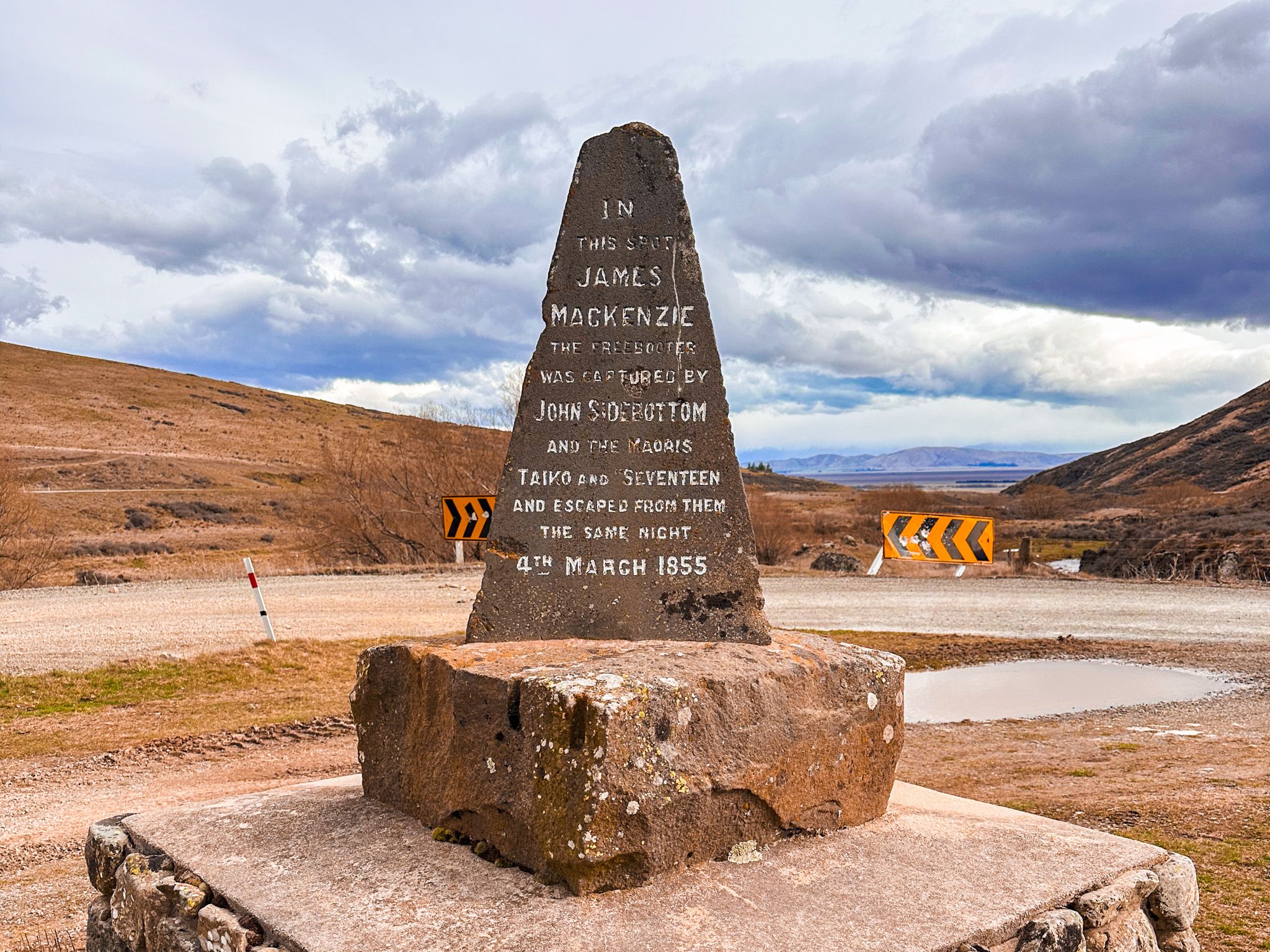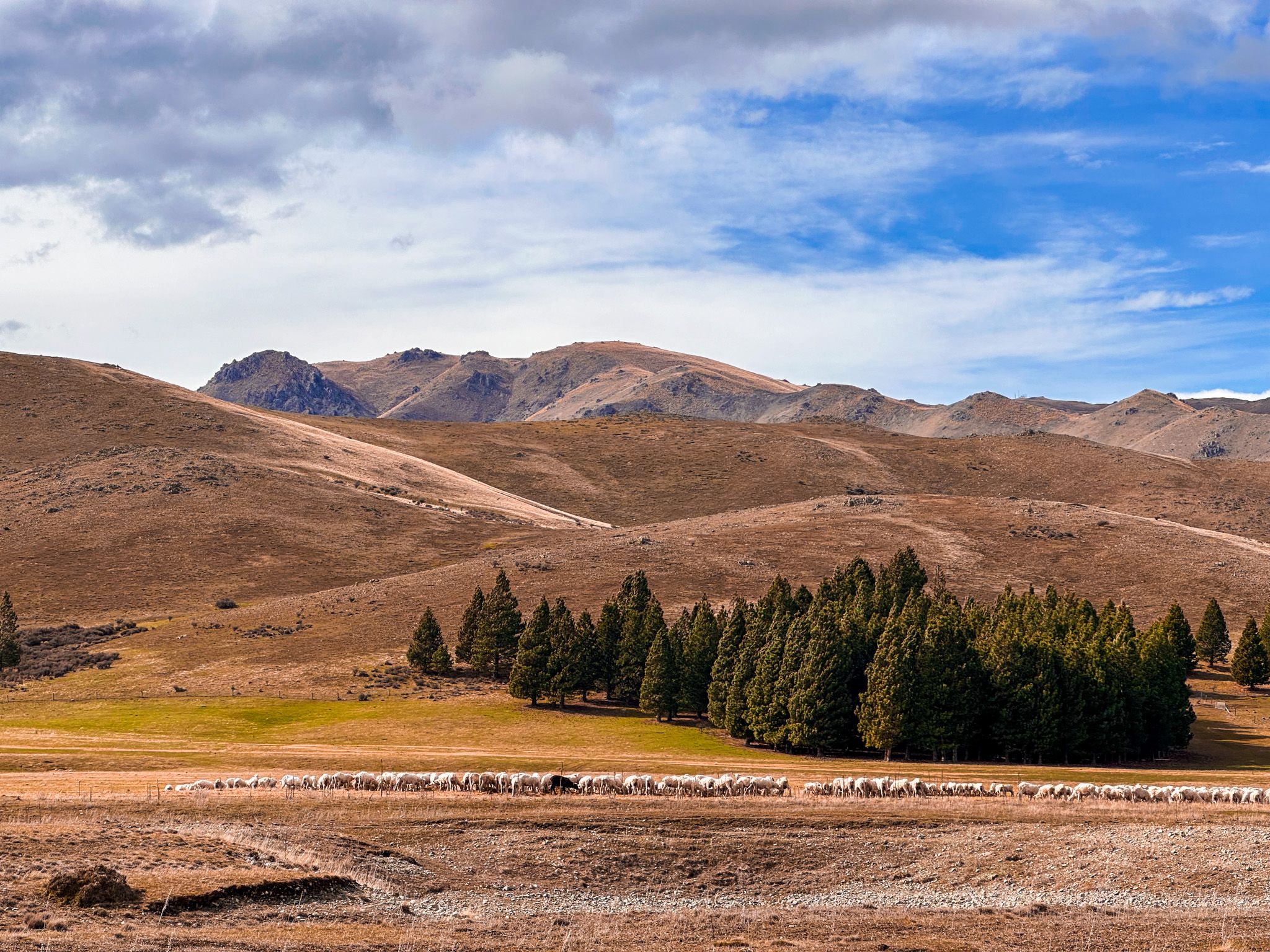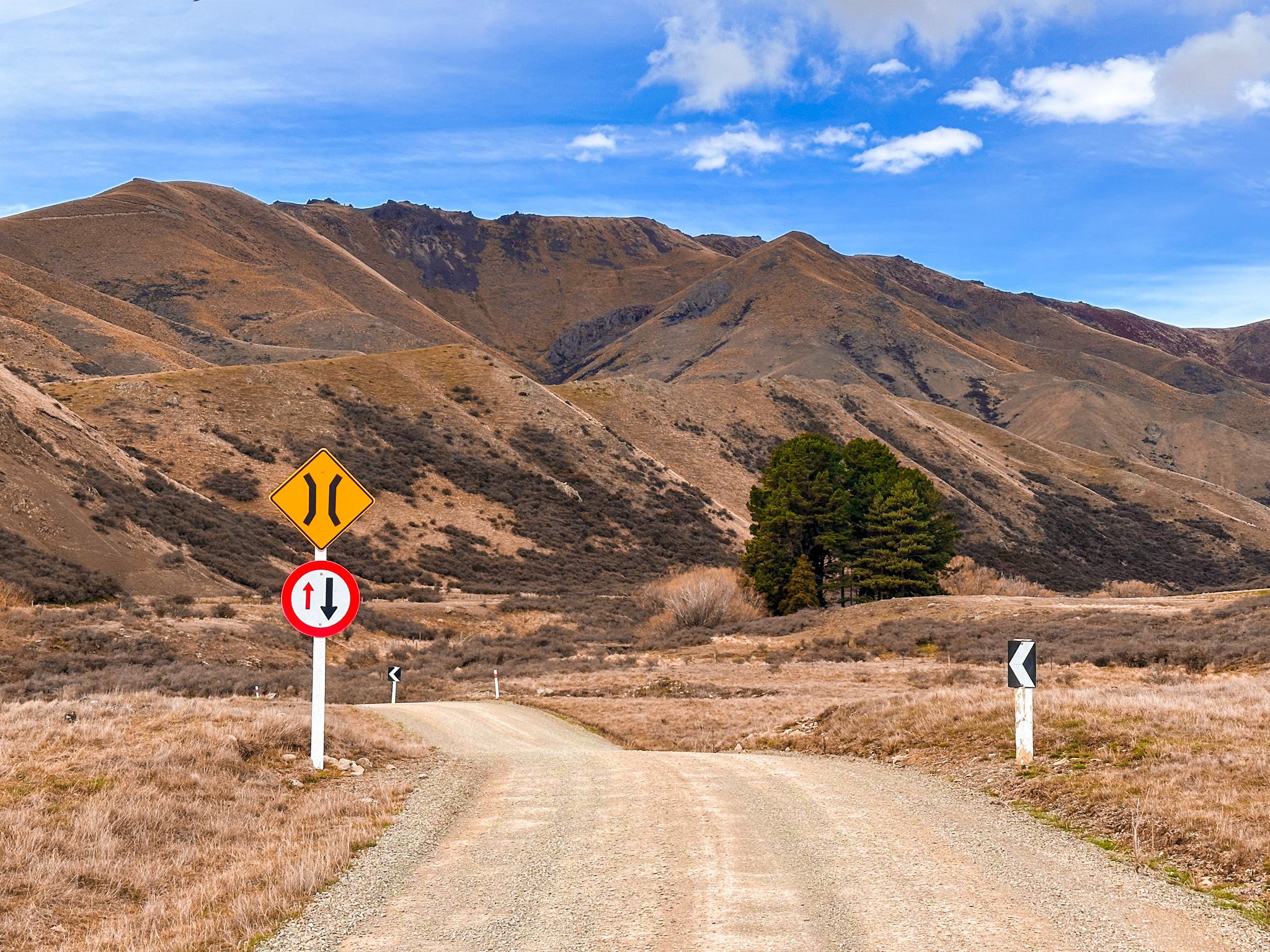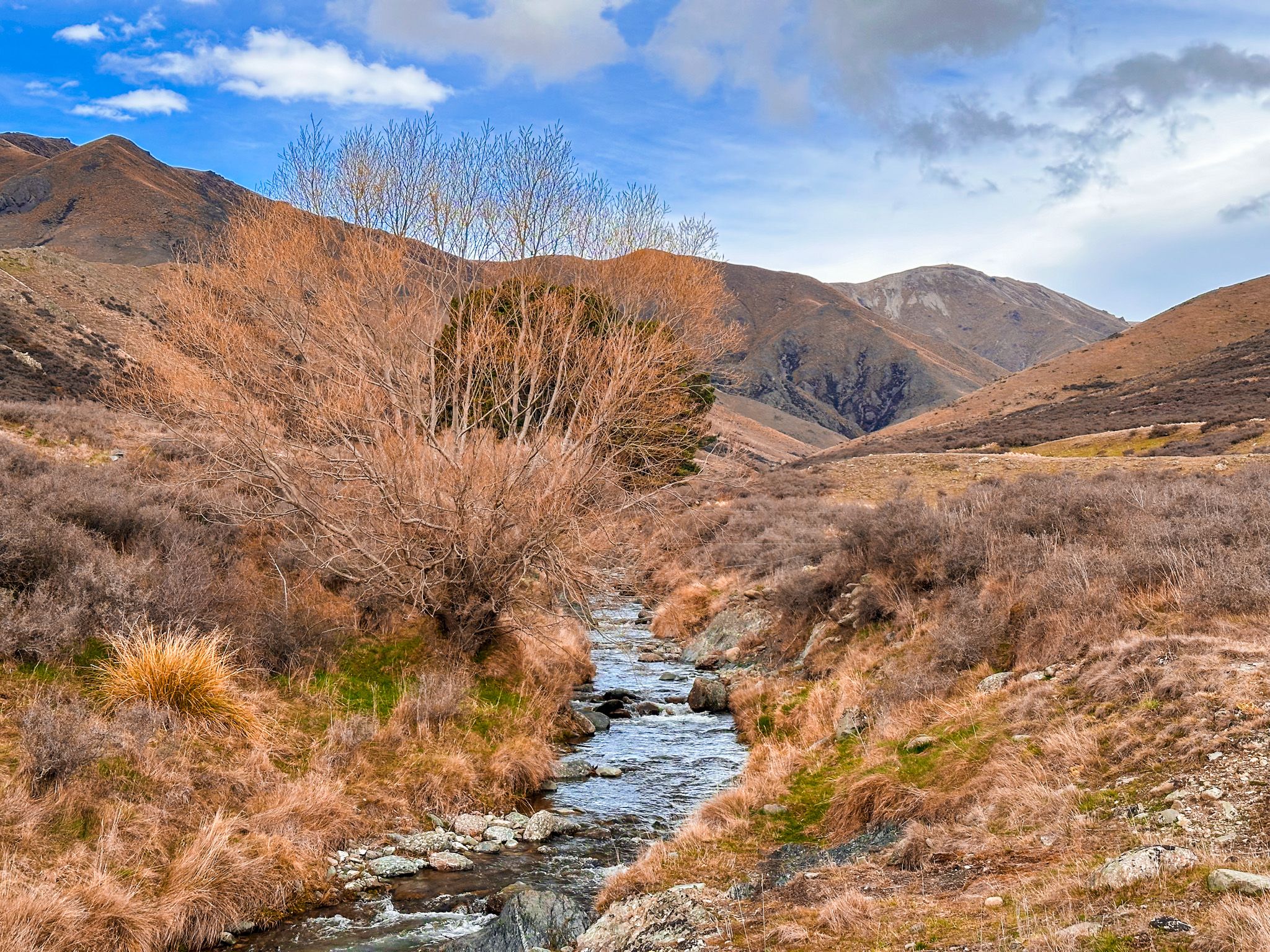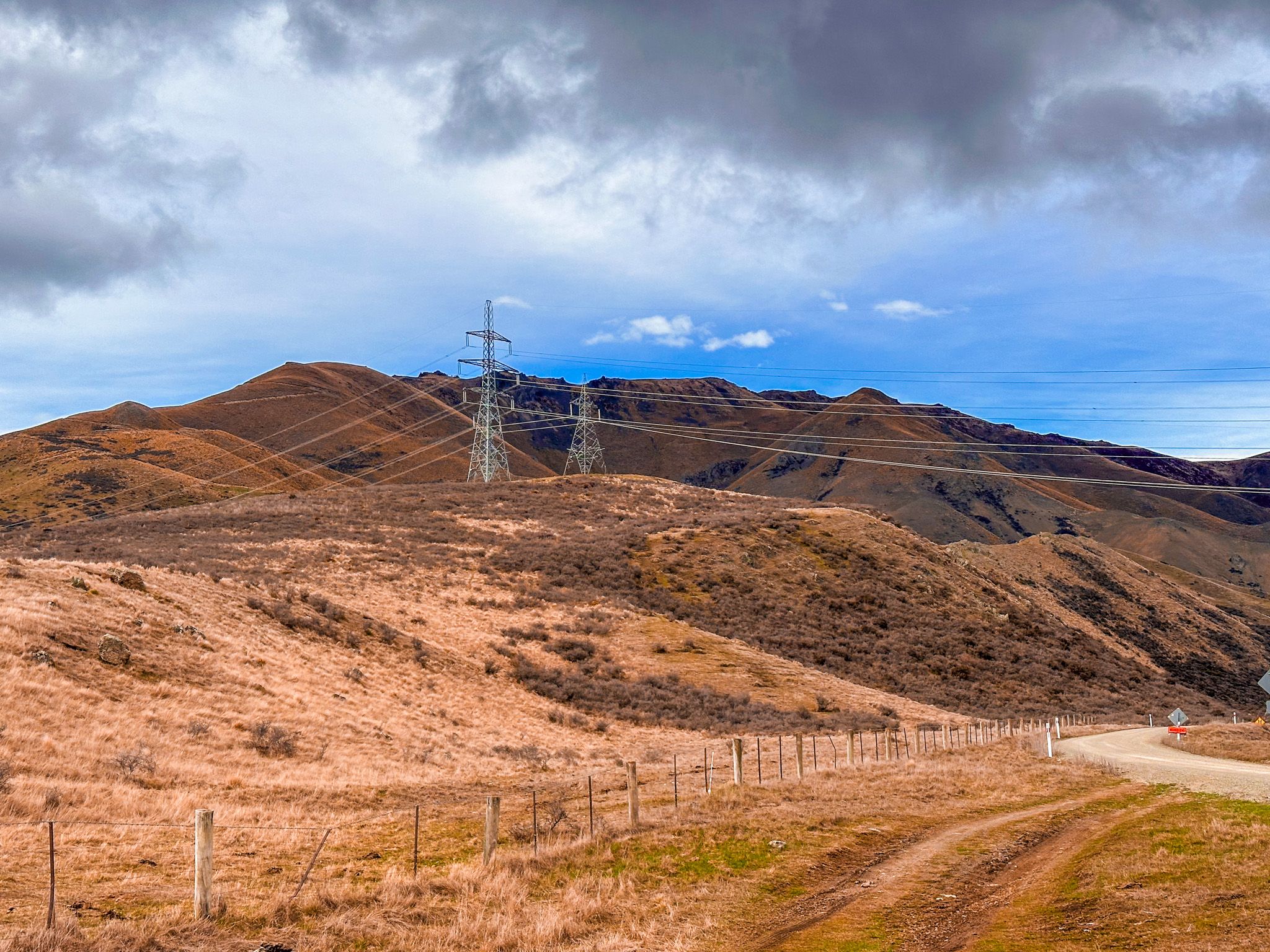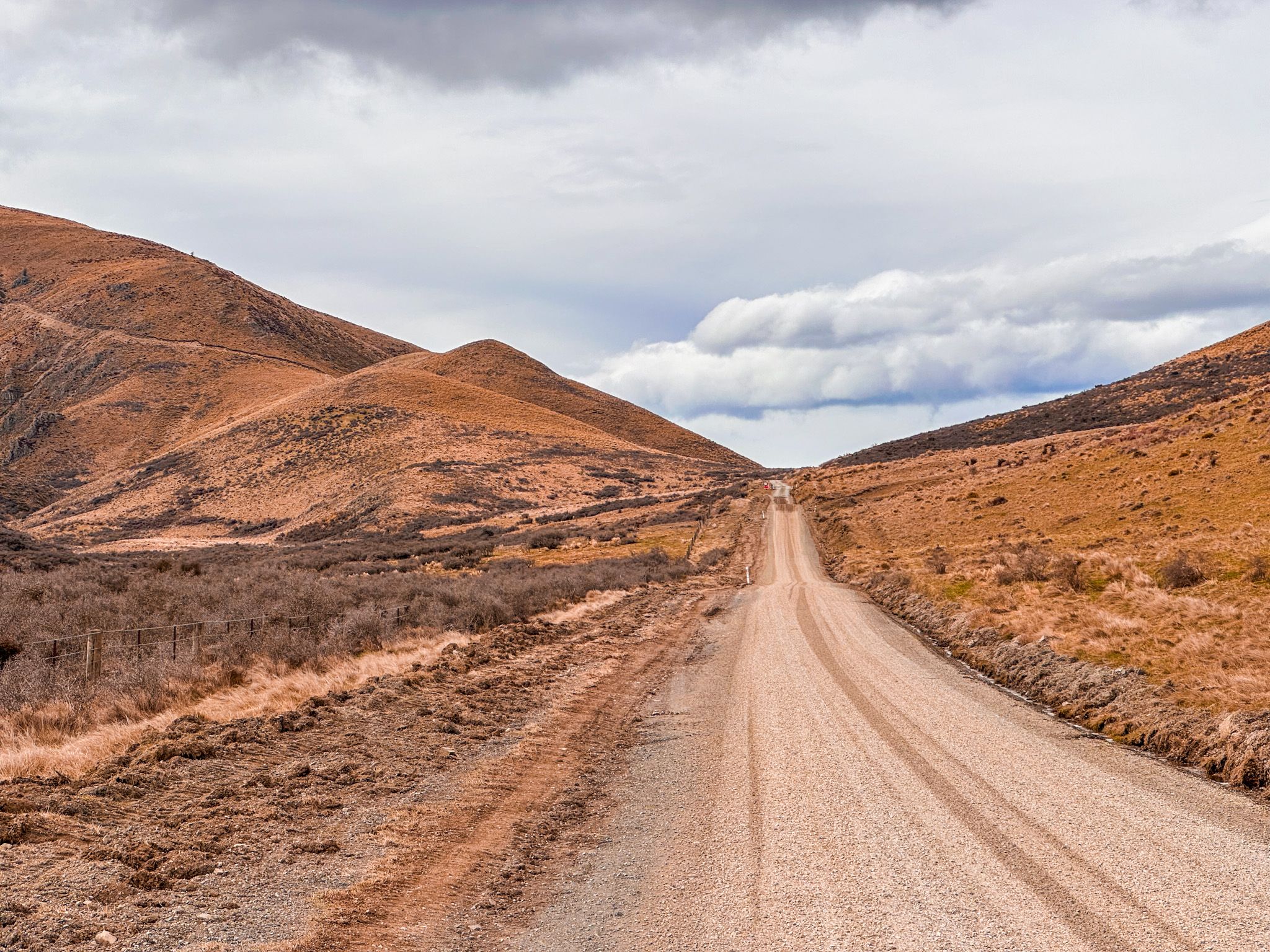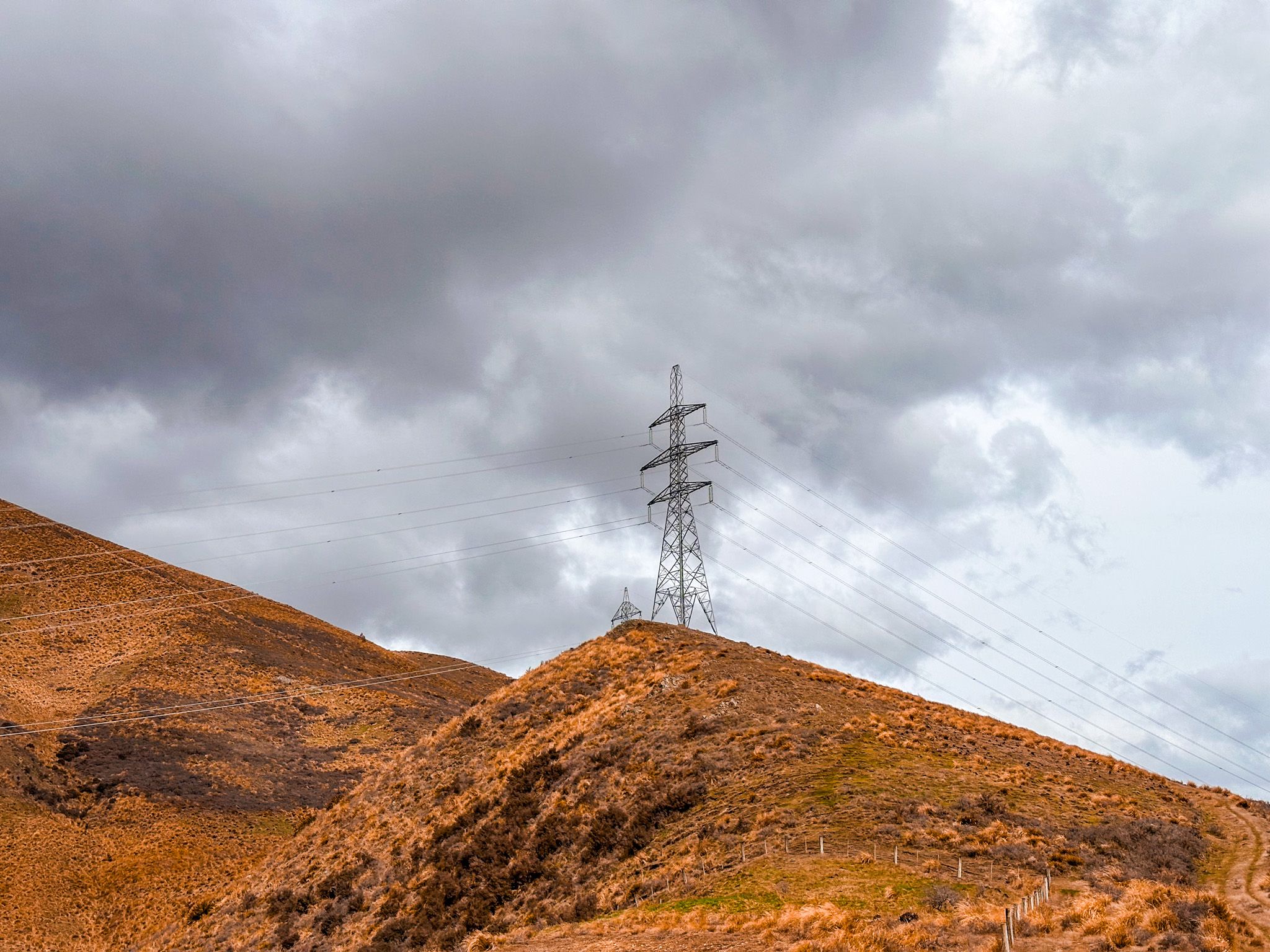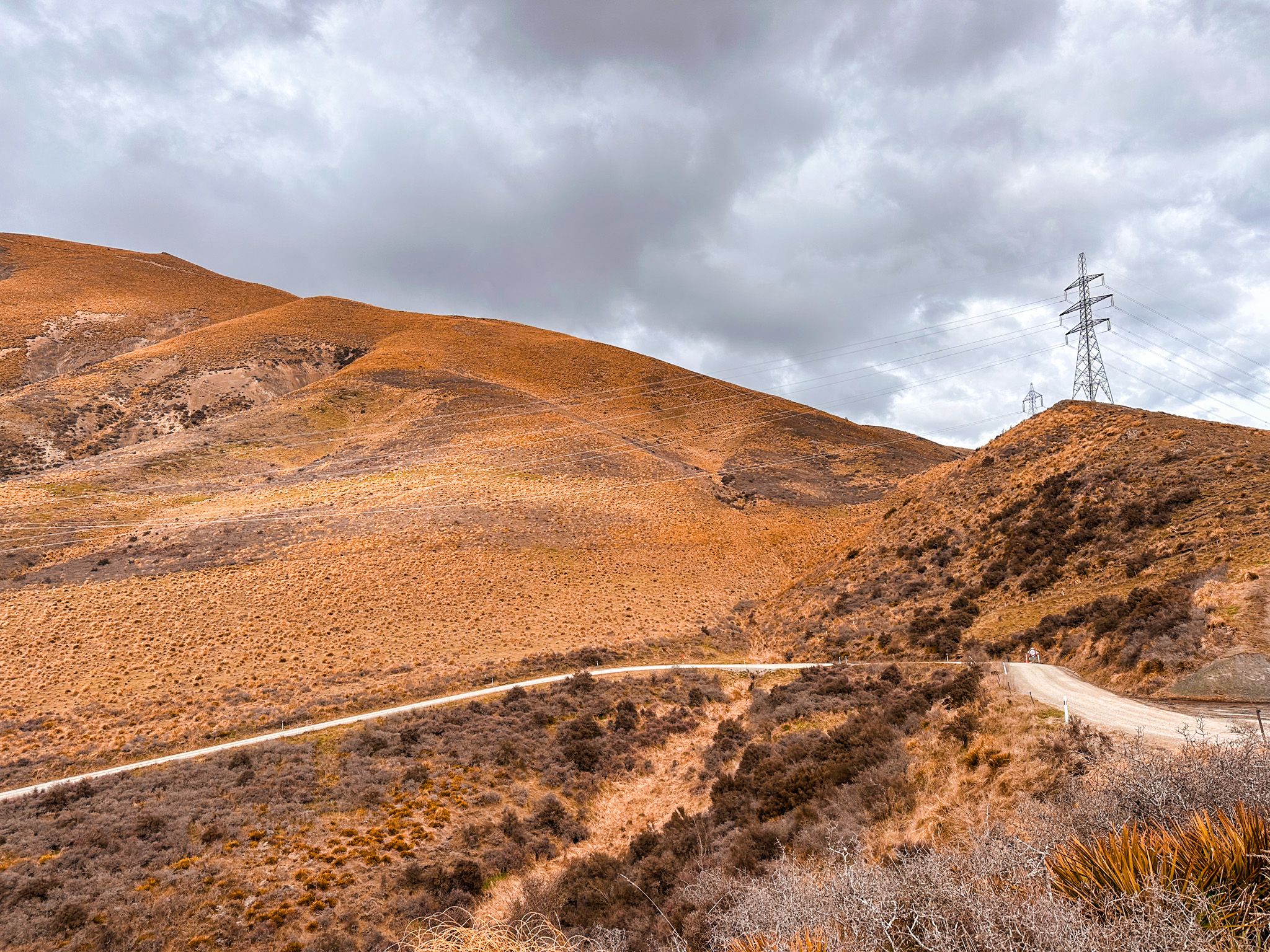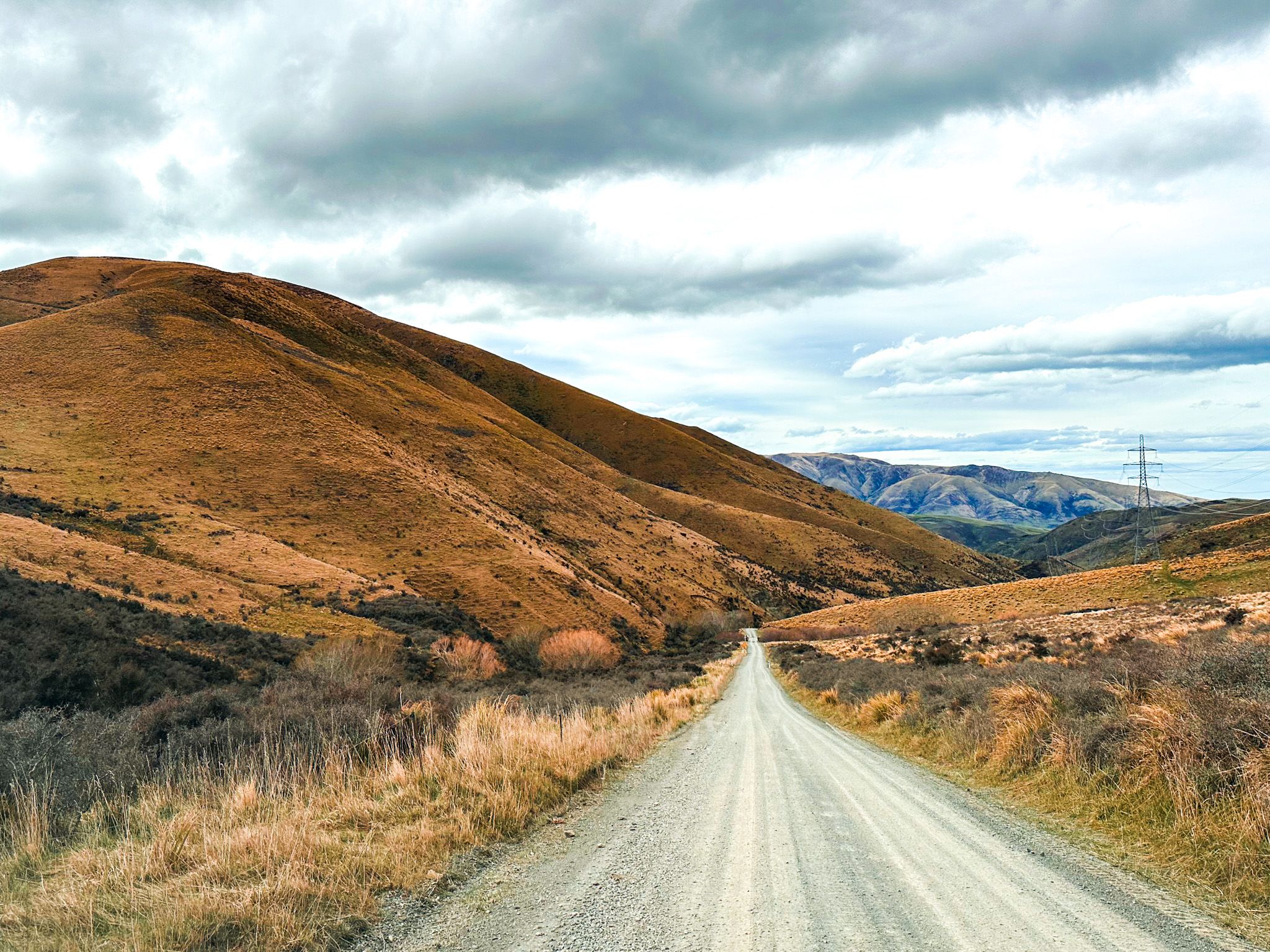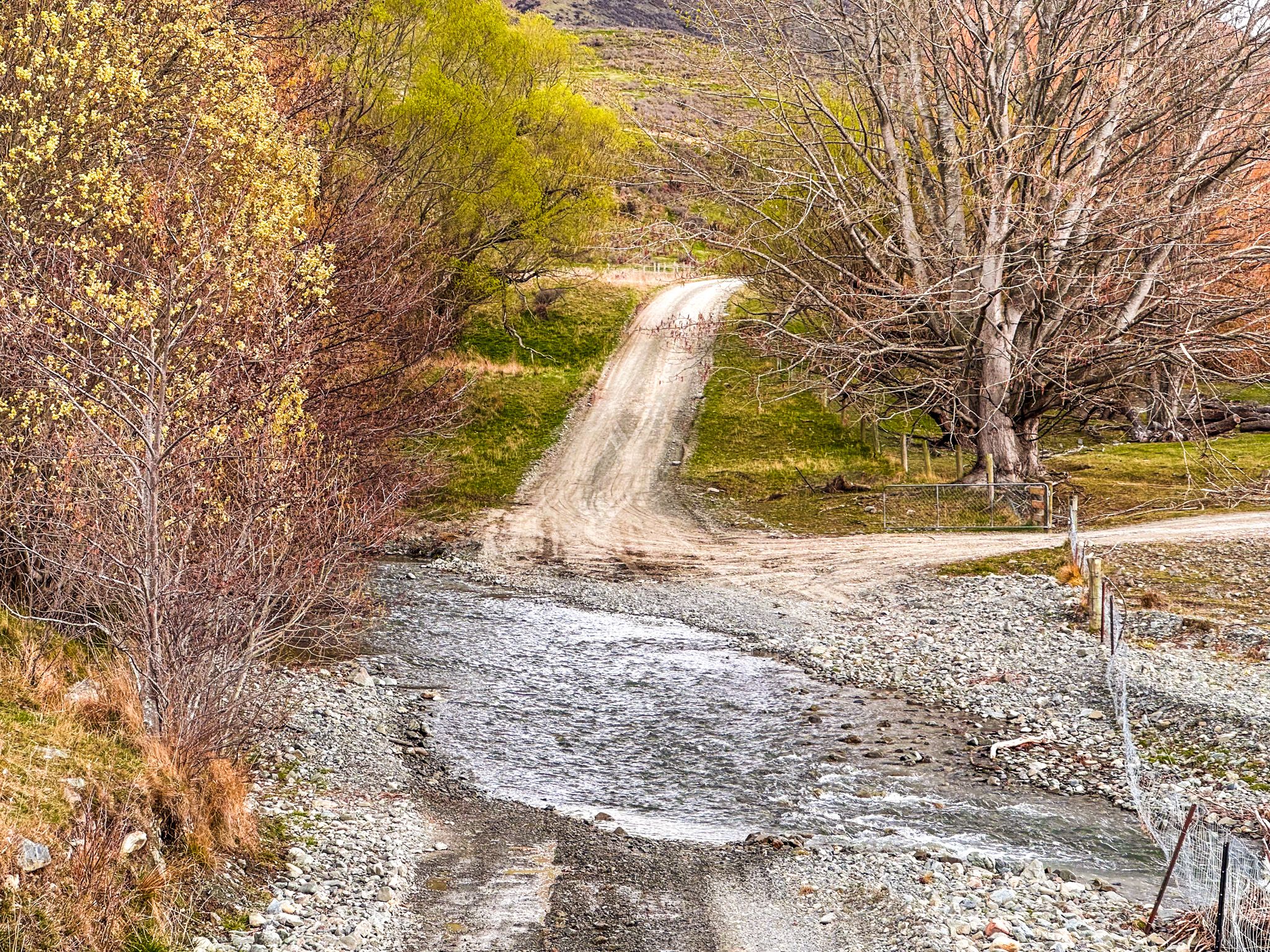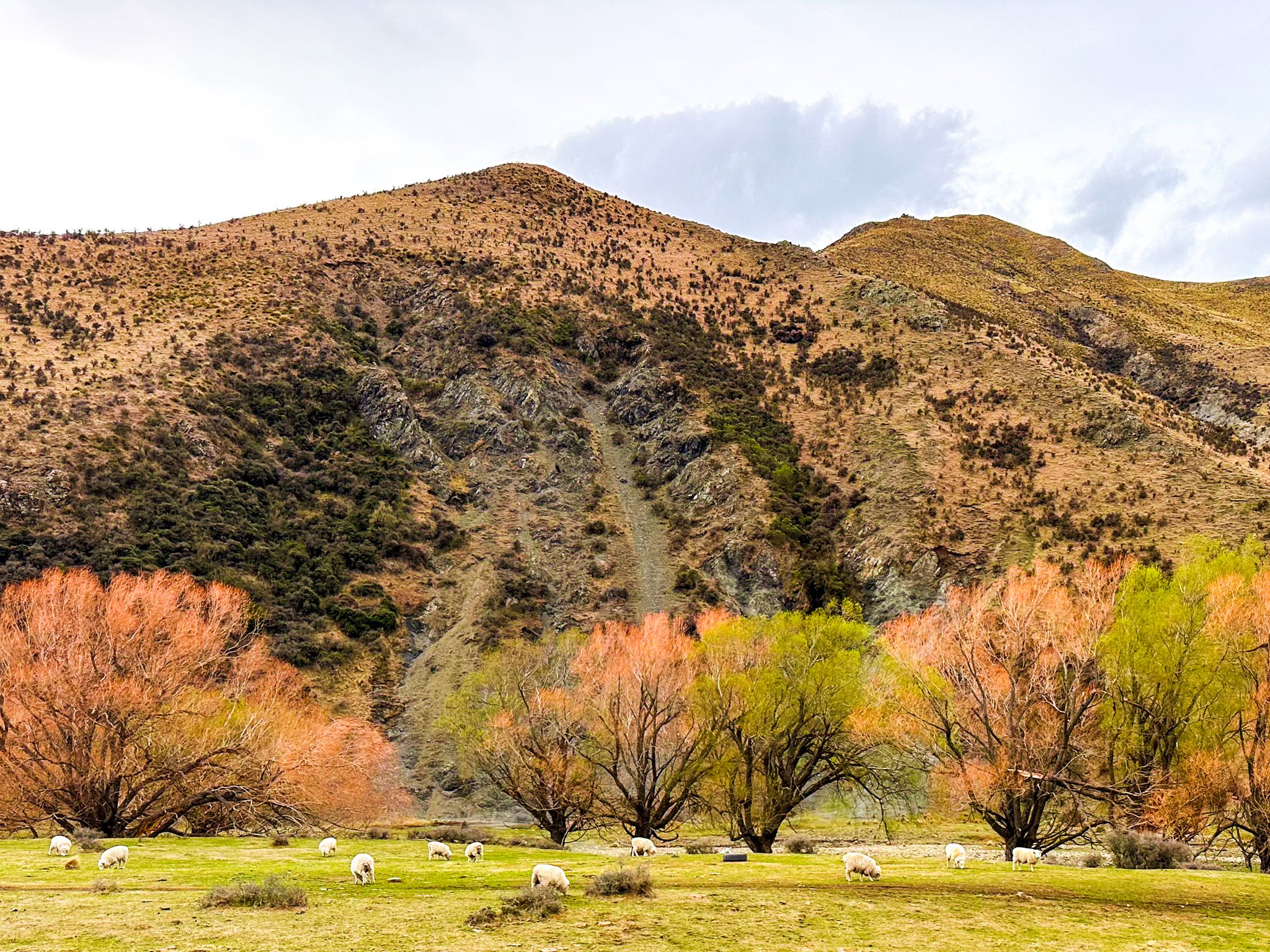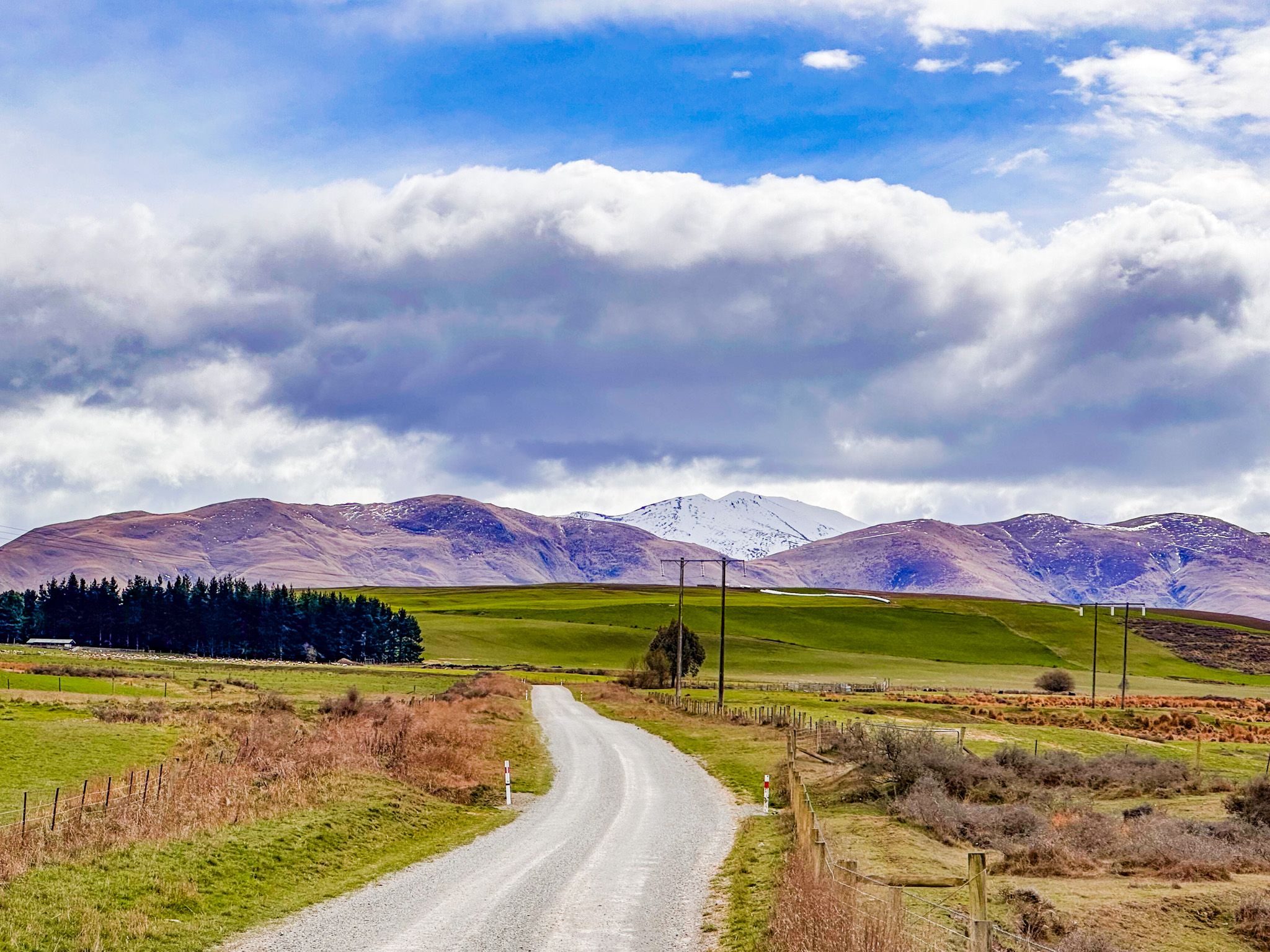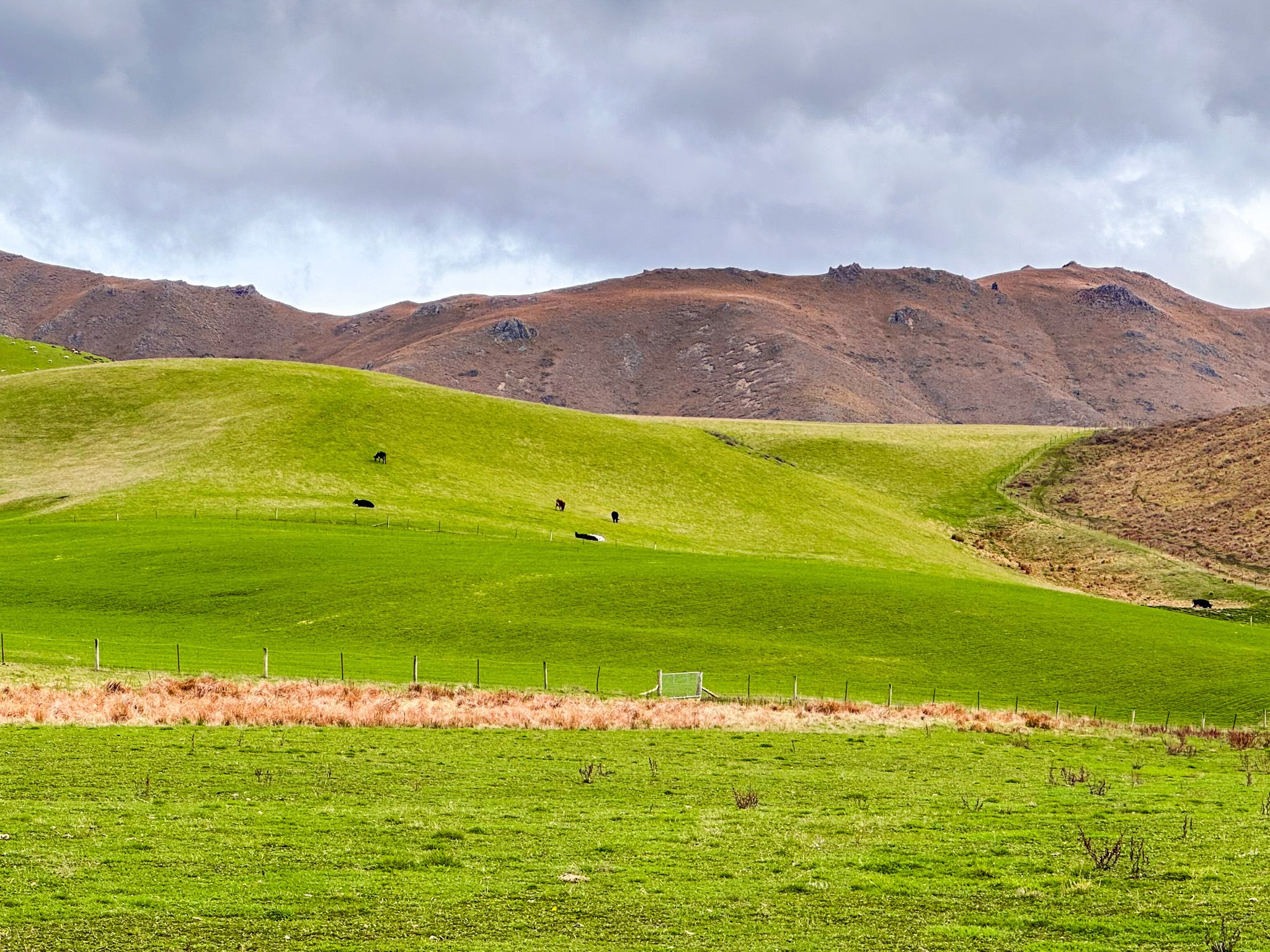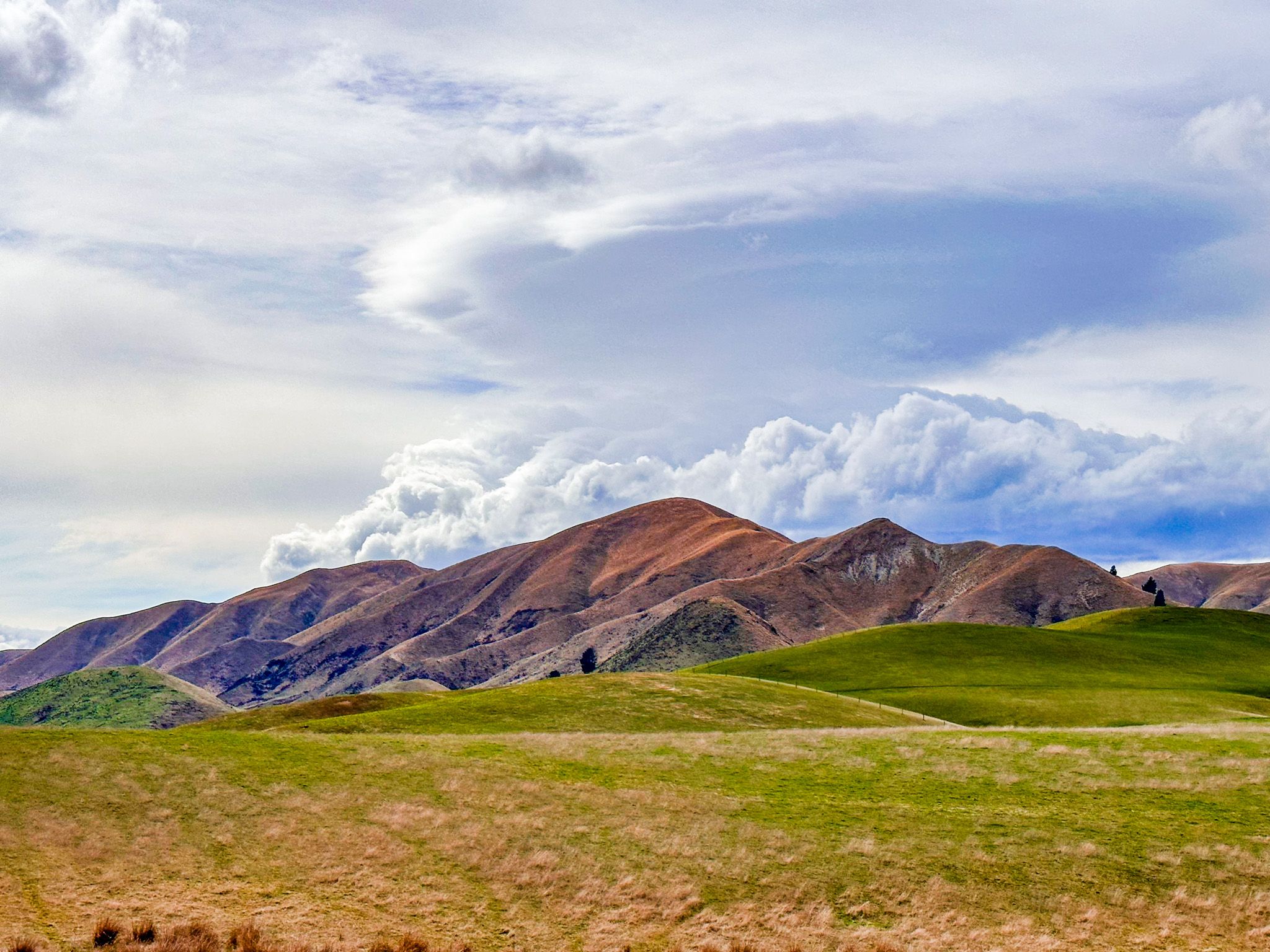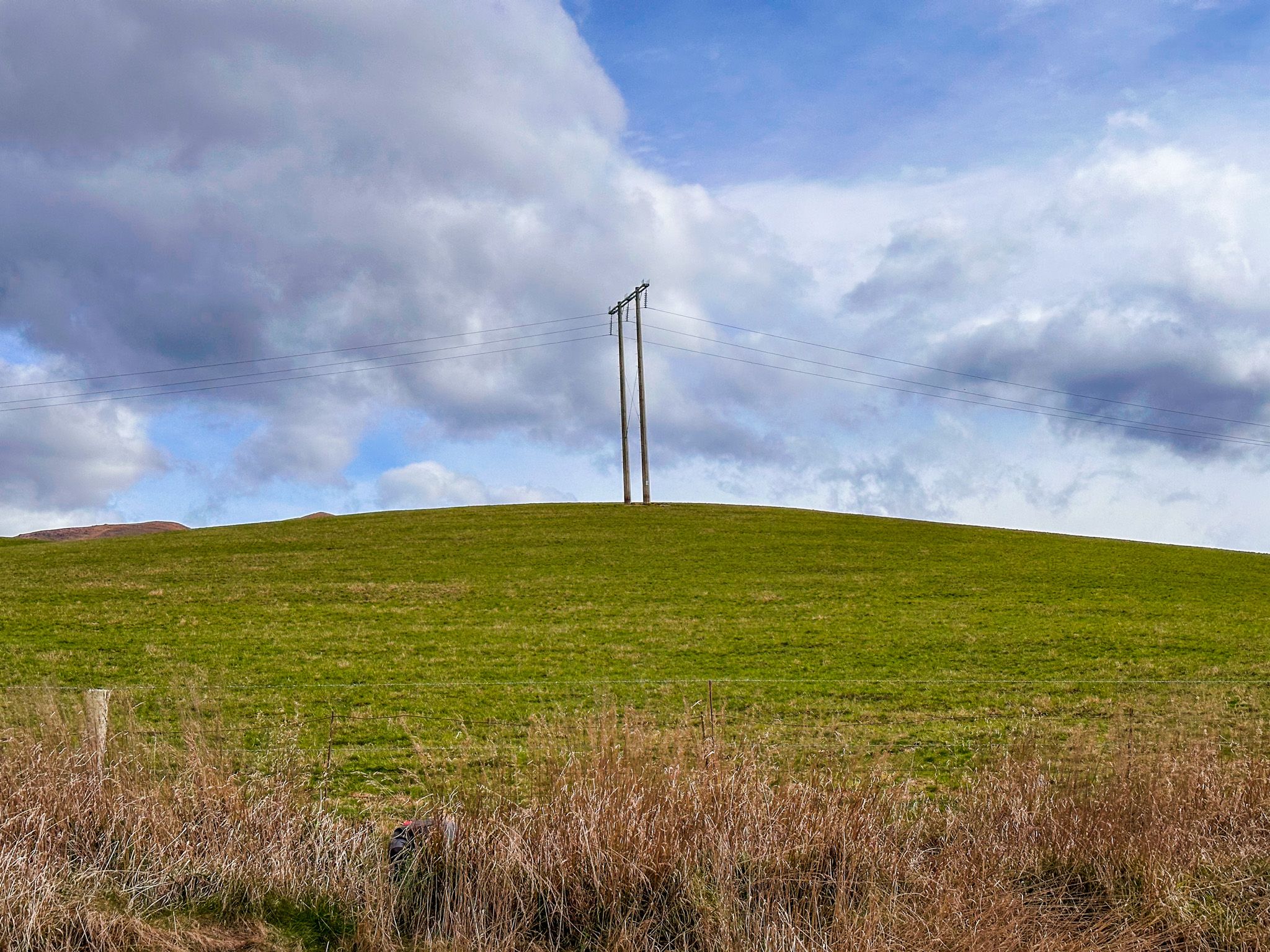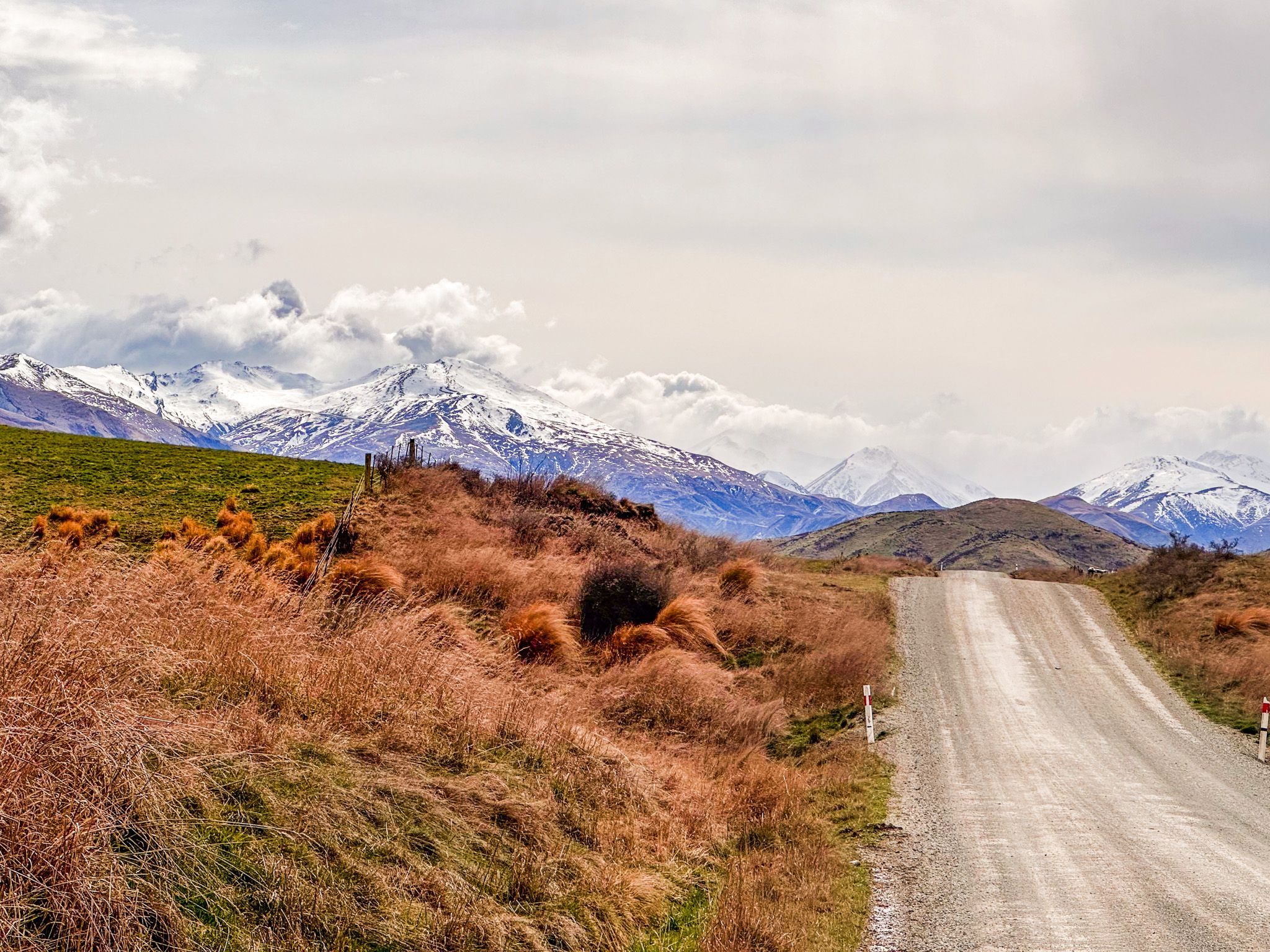State Highway 8 from Fairlie to Tekapo, via Burkes Pass, is the main route into and through the Mackenzie Country. In the 1850s, the region was being opened up for large-scale sheep farming. In March 1855, shepherds searching for 1,000 missing sheep apprehended a suspected rustler, James Mackenzie. Mackenzie was taking sheep over a pass between the Rollesby Range and the Dalgety Range that connects the Opihi River Valley south of Fairlie to the vast highland plain, now the Mackenzie Basin / Te Manahuna, of the Tekapo River to the Waitaki Valley.
Mackenzie was found guilty of rustling and eventually pardoned. Still, local run holders and shepherds saw the pass's value, leading to Mackenzie Pass, Mackenzie Basin, and the wider Mackenzie Country. There is a small three-sided monument on the west side of the pass to Mackenzie and his captors. Each side of the monument has the inscription in a different language - English, Māori, and Gaelic. The captors were English and Maori, and Mackenzie was a Scot.
Today, a remote, narrow gravel road runs over the pass at 780 metres, where the tussock takes over from pastureland. For the views, it is best driven from west to east. Take sealed Haldon Road from State Highway 8, southwest of Burkes Pass, towards Lake Benmore, then turn east at the Mackenzie Pass Road signpost onto the gravel road. Follow the road to the monument; then, it is a short drive to the top of the pass, with enough room to safely stop and capture the view.
From the top, head down to a ford in the road at Lockharts Stream. If it is flooded, there is a bridge option to the south. Once across the stream, head north on Rollesby Valley Road to State Highway 8 at Burkes Pass or southeast on Waratah Road, reaching State Highway 8 south of Fairlie. Both options are scenic, but the road to Burkes Pass is shorter. The route is generally viable throughout the year.
